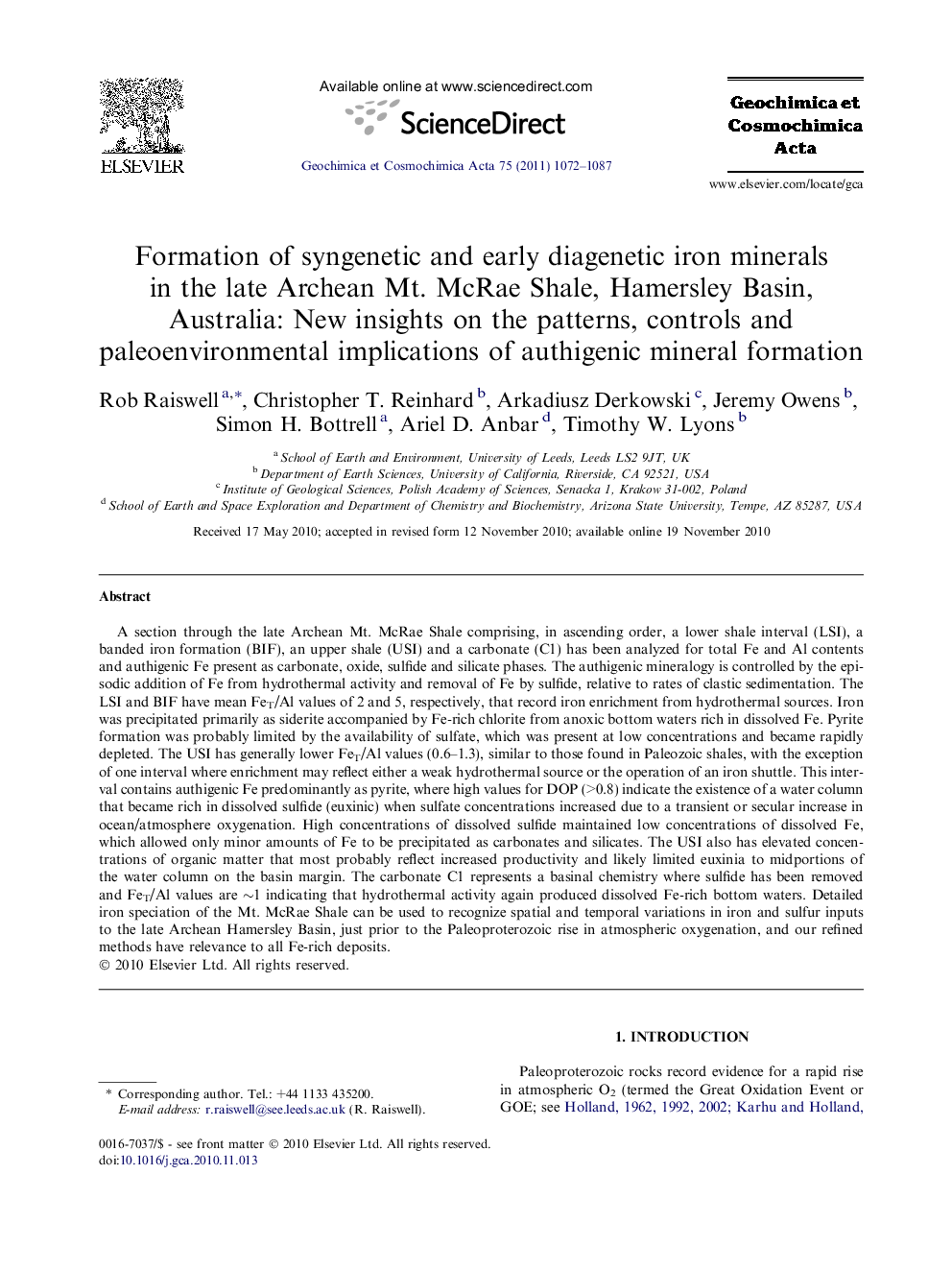| Article ID | Journal | Published Year | Pages | File Type |
|---|---|---|---|---|
| 4703446 | Geochimica et Cosmochimica Acta | 2011 | 16 Pages |
A section through the late Archean Mt. McRae Shale comprising, in ascending order, a lower shale interval (LSI), a banded iron formation (BIF), an upper shale (USI) and a carbonate (C1) has been analyzed for total Fe and Al contents and authigenic Fe present as carbonate, oxide, sulfide and silicate phases. The authigenic mineralogy is controlled by the episodic addition of Fe from hydrothermal activity and removal of Fe by sulfide, relative to rates of clastic sedimentation. The LSI and BIF have mean FeT/Al values of 2 and 5, respectively, that record iron enrichment from hydrothermal sources. Iron was precipitated primarily as siderite accompanied by Fe-rich chlorite from anoxic bottom waters rich in dissolved Fe. Pyrite formation was probably limited by the availability of sulfate, which was present at low concentrations and became rapidly depleted. The USI has generally lower FeT/Al values (0.6–1.3), similar to those found in Paleozoic shales, with the exception of one interval where enrichment may reflect either a weak hydrothermal source or the operation of an iron shuttle. This interval contains authigenic Fe predominantly as pyrite, where high values for DOP (>0.8) indicate the existence of a water column that became rich in dissolved sulfide (euxinic) when sulfate concentrations increased due to a transient or secular increase in ocean/atmosphere oxygenation. High concentrations of dissolved sulfide maintained low concentrations of dissolved Fe, which allowed only minor amounts of Fe to be precipitated as carbonates and silicates. The USI also has elevated concentrations of organic matter that most probably reflect increased productivity and likely limited euxinia to midportions of the water column on the basin margin. The carbonate C1 represents a basinal chemistry where sulfide has been removed and FeT/Al values are ∼1 indicating that hydrothermal activity again produced dissolved Fe-rich bottom waters. Detailed iron speciation of the Mt. McRae Shale can be used to recognize spatial and temporal variations in iron and sulfur inputs to the late Archean Hamersley Basin, just prior to the Paleoproterozoic rise in atmospheric oxygenation, and our refined methods have relevance to all Fe-rich deposits.
